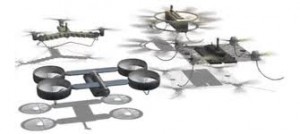
Different services of the U.S. military are working on different solutions providing persistent intelligence surveillance and reconnaissance (ISR) supporting the warfighter with miniature autonomous vehicles designed for ‘Perch and Stare’ mission profile. One of the most mature programs, the Shrike recently unveiled by Aerovironment was developed under Defense Advanced Research Programs Agency (DARPA) funding to develop a Stealthy Persistent Perch and Stare (SP2S) capability. But Jim McCormick, a program manager at the Defense Advanced Research Projects Agency (DARPA) believes that commercial off-the shelf (COTS) technology harnessed by the innovation of the ‘crowd’ could yield new capabilities that could benefit the warfighter even beyond these military funded programs. “we feel there is more potential there, and the current capability is still not ready for procurement. We hope that the crowd source will be able to overcome these barriers.” McCormick said, adding that 93 teams have already joined, some of them are foreign “Our focus is on innovation, regardless to where it comes from”.

Vertical take off and landing, transition from flight mode to observation mode, while maneuvering around obstacles are basic requirements. DARPA expects teams to demonstrate higher level of autonomy and automation, particularly in transition modes, obstacle avoidance and ‘follow-me’ flight mode, supporting operations on the move. The payload to be used should be able to identify persons or activities of interest up to 100 feet away with real-time video transmission monitored at a distance of two miles. Communications should be able to support non line of site, Total observation time may require up to three hours of pictures and/or video to document the facts. The vehicle should maintain low acoustic and visual signature to minimize probability of detection. The entire air vehicle must fit within a rucksack and a single person traveling by foot must be able to carry and operate the vehicle without assistance.
For this program DARPA has collaborated with the U.S. Navy Space and Naval Warfare Systems center Atlantic PM DARPA to launch ‘UAVForge’, a global crowd sourcing competition to design, build, and fly advanced small unmanned air vehicle (UAV) systems. The winning team will get $100,000 prize to build 15 examples of the winning design to be evaluated by the military by spring 2012 at Camp Lejeune N.C. Teams can qualify for the competition until October 25, 2011. Voting for the winning teams will commence from Oct 27 till Nov 2, 2011.
DARPA has already employed a similar design contest designing and building a Crowd-Driven Combat Support Vehicle Prototype in 98 Days.
















